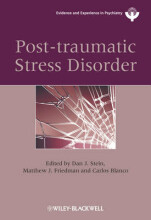PTSD and Related Disorders
3 important questions on PTSD and Related Disorders
Adjustment Disorder AD
can be diagnosed at any time after someone was exposed to a stressful or traumatic event (bankruptcy, failure etc.)
Advantage of AD as diagnosis
general nonspecificity has made it possible for clinicans to have a diagnosis that acknowledges the distressing and debilitating functional impairment of patients who require mental health treatment but do not meet criteria for other psychiatric diagnosis
Disadvantage:
nonspecificity has made it difficult to design epidemiological surveys, longitudinal studies, or clinical treatment trials concerning people with this disorder.
Why would we want to add a sub syndrome diagnosis? Why wouldn't we?
Arguments against however are that AD is the appropriate diagnosis for such individuals
it over- pathologizes normative reactions.
Not likely to appear in DSM 5
Proposed there may be two subtypes of PTSD
hyperarousal reaction
The question on the page originate from the summary of the following study material:
- A unique study and practice tool
- Never study anything twice again
- Get the grades you hope for
- 100% sure, 100% understanding































